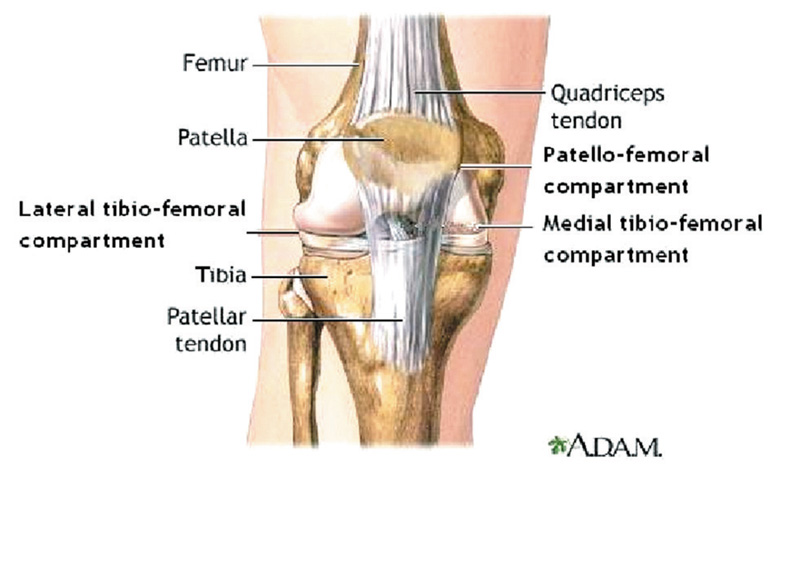

The dressing remains on the knee for a period of two weeks and then is removed. Outpatient physiotherapy will achieve the same outcome and patients are far better off at home than remaining in a hospital environment. Patients do not require inpatient rehab as there is no advantage to this. Hospital stay is usually one or two nights and patients are discharged home when comfortable with an outpatient physiotherapy program. An ice compression bandage is placed around the knee and patients are encouraged to mobilise on the same day of surgery. The wound is again infiltrated with local anaesthetic prior to closure with absorbable sutures. An appropriately sized polyethylene insert (new cartilage) is placed on the tibial component.

Knee compartments trial#
Accurate sizing is insured by using trial implants before the definitive implants are cemented in place. The affected medial compartment is then entered and the worn out bone/cartilage is reshaped and prepared to receive the artificial joint. The surgery involves a small incision over the medial (inner) side of the patella (kneecap). Surgery is performed under a general anaesthetic combined with a local adductor nerve block and further local anaesthetic that is placed around the knee joint. Usually an easier revision to a TKR compared to revising a TKR to another TKR.Generally a better range of motion/flexibility.Preservation of the native patellofemoral and lateral compartment and cruciate ligaments.Feeling that the knee feels more like a “normal knee” compared to a TKR.The major advantage of a uni-compartmental knee replacement over a total knee replacement is the following: The outcomes of revision from a uni-compartmental to a total knee replacement are similar to revisions from a total knee replacement to another totally replacement. Revision to a total knee replacement is possible after a uni-compartmental knee replacement. Dr Solomon’s registry data has shown that his revision rate is 2.5% at 10 years. The expectation is that a uni-compartmental knee replacement may well last up to 20 years. Patient selection is critical in deciding who is suitable for a uni-compartmental knee replacement and with good patient selection, the results are excellent. Patients with inflammatory arthritis (like rheumatoid arthritis) are not candidates for a uni-compartmental replacement because inflammatory-type arthritis typically involves the entire joint. The surgery is not appropriate for patients with marked stiffness in the knee or those with a significant angular deformity or significant instability due to ligament damage. Partial knee replacement is appropriate for patients with arthritis that is confined to a single compartment of the knee and is generally restricted to patients who are not morbidly obese. The Uni Knee replacement takes the place of the damaged area of the knee, leaving the other compartments intact.īetween 10-15% of patients who present with knee osteoarthritis may be suitable for a uni-compartmental knee replacement. In cases where non-operative therapies do not provide sufficient symptom relief, surgeons can remove damaged cartilage and bone in the diseased area only, while preserving the ligaments that help support the knee joint as well as the cartilage in the unaffected areas of the knee. Patients with uni-compartmental knee arthritis have osteoarthritis in only one section or compartment of the knee. Isolated patellofemoral osteoarthritis is even more uncommon.

The medial compartment is by far the most frequent site of osteoarthritis of the knee, with the disease occurring less frequently in the lateral compartment. Knee osteoarthritis may occur in any one of the three compartments that make up the knee joint. Partial knee replacement or Uni knee replacement is a treatment option that replaces (or resurfaces) only the damaged portion of the knee while conserving knee ligaments and unaffected cartilage. Sydney Orthopaedic Specialists, Orthopaedic Surgeons, Randwick, Sydney, NSW / For Patients / Knee / Procedures / Surgical Treatments / Knee Replacement and Reconstruction / Unicompartmental Knee Replacement Unicompartmental Knee Replacement


 0 kommentar(er)
0 kommentar(er)
